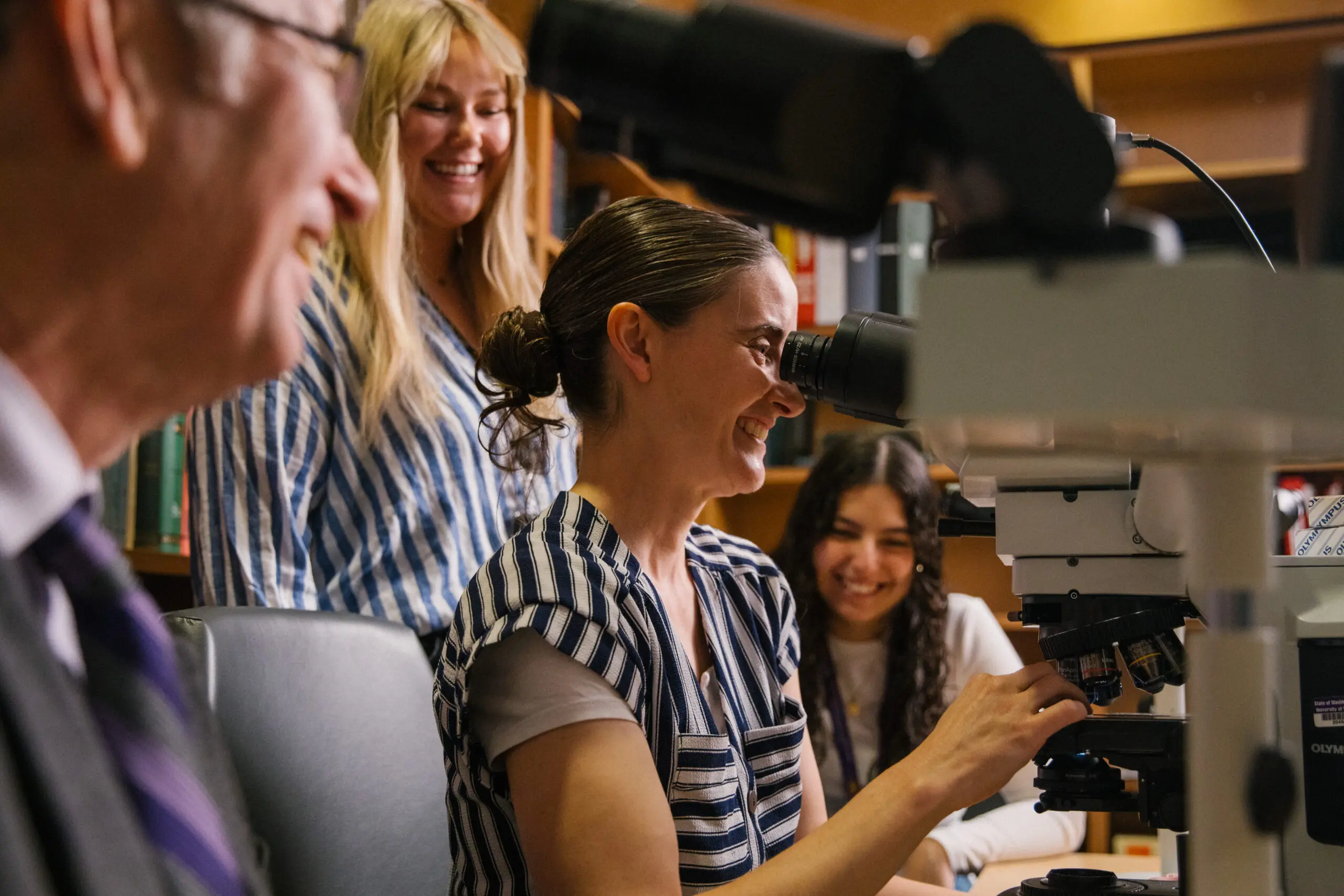The Arlington garage, transformed into a gym, greets visitors’ noses and eyes almost simultaneously. A whiff of sweat hangs amid a patchwork of boxing posters covering the walls. In the ring, trainer Bret Summers is putting Suzanne Taitingfong through her paces.
“Harder, hit me harder,” Summers barks as Taitingfong jabs at the pads Summers holds up as targets. “Okay, now back, back, back, and to the side. Eyes up.”
Summers moves on to his next trainee while Taitingfong, 60, takes a break and reflects on her journey to this farmland dotted by log cabins, shaggy Highland cattle and dirt roads. She says the hour-long boxing sessions with others who are fighting the effects of Parkinson’s disease is worth the trip.
“It is easy to feel like a victim with this disease,” she says. “When I walk into the ring, I don’t feel like a victim, I feel empowered. I am physically fighting against the disease.”
Loss of Control
Parkinson’s causes the brain to gradually stop producing a neurotransmitter called dopamine, the loss of which gradually reduces a person’s ability to control movements.
In 2010, Taitingfong noticed she couldn’t move her shoulder. Balance emerged as a problem. For five years, she was able to moderate symptoms through drugs and exercise, but her body became less her own. The Marysville mother of three felt trapped in her home as her legs torqued painfully with dystonia or abnormal muscle tone. On the advice of her daughters, she consulted UW Medicine physicians and decided to try deep brain stimulation to control the spasms and tremors.
Andrew Ko, M.D., a neurosurgeon, says that drugs such as levodopa can lose their impact over time or begin to have unpleasant side effects. Given that Taitingfong was experiencing both, “she was an excellent candidate for deep brain stimulation,” in which implanted probes and a neurostimulator act as a pacemaker for the brain, controlling and resetting electrical activity in the area of the brain causing the tremors.
Ko operated on Taitingfong in January 2016. A follow-up procedure in February programmed the neurostimulator device in her chest, which is hard-wired to her brain. With adjustments, they began to find just the right amount of electrical activity to control the tremors.
“Once they found the right combination, my leg immediately relaxed and the tremors subsided,” Taitingfong says. “My husband said my face lit up, and I had the best smile he’d seen in years.”
Boxing and Parkinson’s
Taitingfong knows her treatment isn’t a cure, but it has given her the energy and the time to seek out other activities to keep the advance of Parkinson’s at bay.
Her search for activities led her to a gym in Bellevue that promoted boxing for Parkinson’s patients, but the long drive from Marysville led her to seek a closer option. She contacted Summers, a former pro fighter whose uncle also suffers from the disease. The boxing club was created, and it now meets twice a week. Taitingfong hopes to expand club membership and is working with the Marysville YMCA to include classes for Parkinson’s patients.
“The physical activity makes you feel like a victor,” she says, before returning to spar with Summers. “You don’t quite feel like the victim anymore.”

